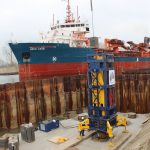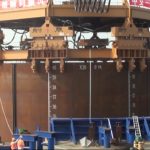For the highway from Cartagena to Barranquila, Colombia, the approx. 6 km long bridge “Viaducto Gran Manglar” is built just north of Cartagena through a shallow lagoon with mangroves.
Mangroves are protected vegetation and therefore a construction method with minimal environmental impact was required. The contract was awarded to the Italian contractor Rizzani de Eccher who proposed to build the bridge from a launching gantry, using precast concrete elements.
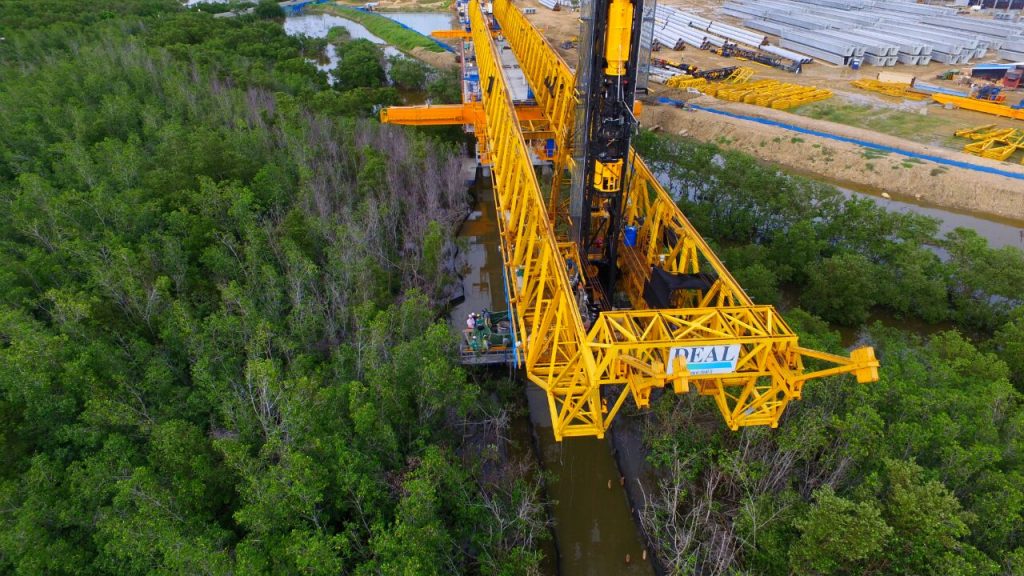
Picture 1

Picture 2
This very special construction method – developed by Canadian piling & equipment company Berminghammer – has a minimal impact on the surroundings, because the footprint of the construction work is the same as for the bridge itself: the gantry rests on the front end of the already completed part of the bridge and cantilevers to the location of the next pier. At the front of the gantry the piles for the next pier are installed, while at the back the main girders of the bridge deck are installed. These girders (just as all other construction materials) are transported over the already completed part of the bridge instead of through the lagoon, further reducing the environmental impact.
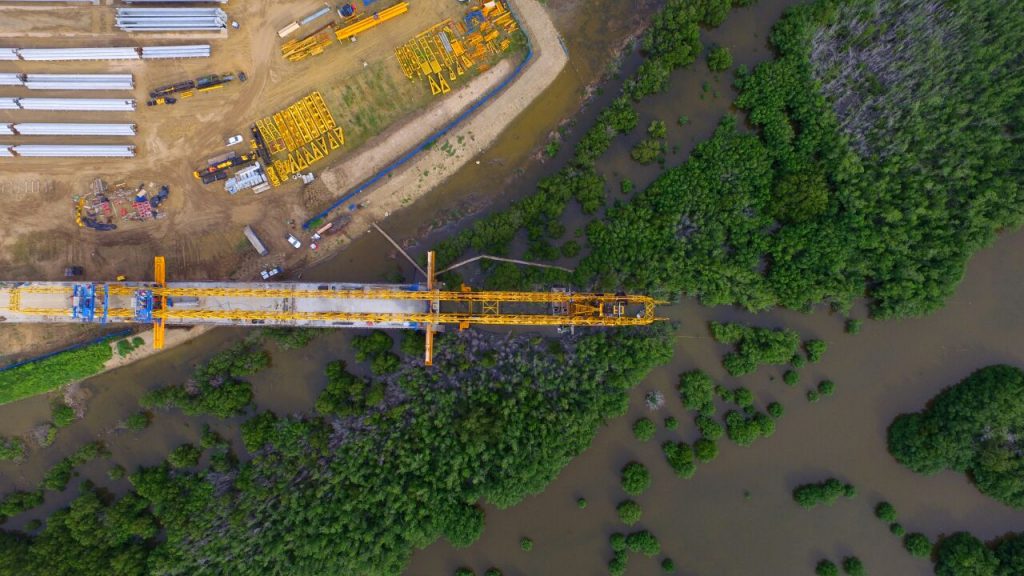
Picture 3
Essential for this construction method is the verification of the foundation piles’ bearing capacity for each of the 129 piers within hours after installation, because the piles will have to bear their maximum design load 72 hours after driving. For this reason Rizaani chose to purchase Allnamics PDR-systems and AllWave software, and have their staff trained on site by Allnamics. This enabled Rizzani to perform PDA and subsequent signal matching themselves, with Allnamcis support (both on site & remote). Rizzani also contracted Allnamics to perform the dynamic monitoring of the test piles and the development and implementation of the pile driving and acceptance criteria.
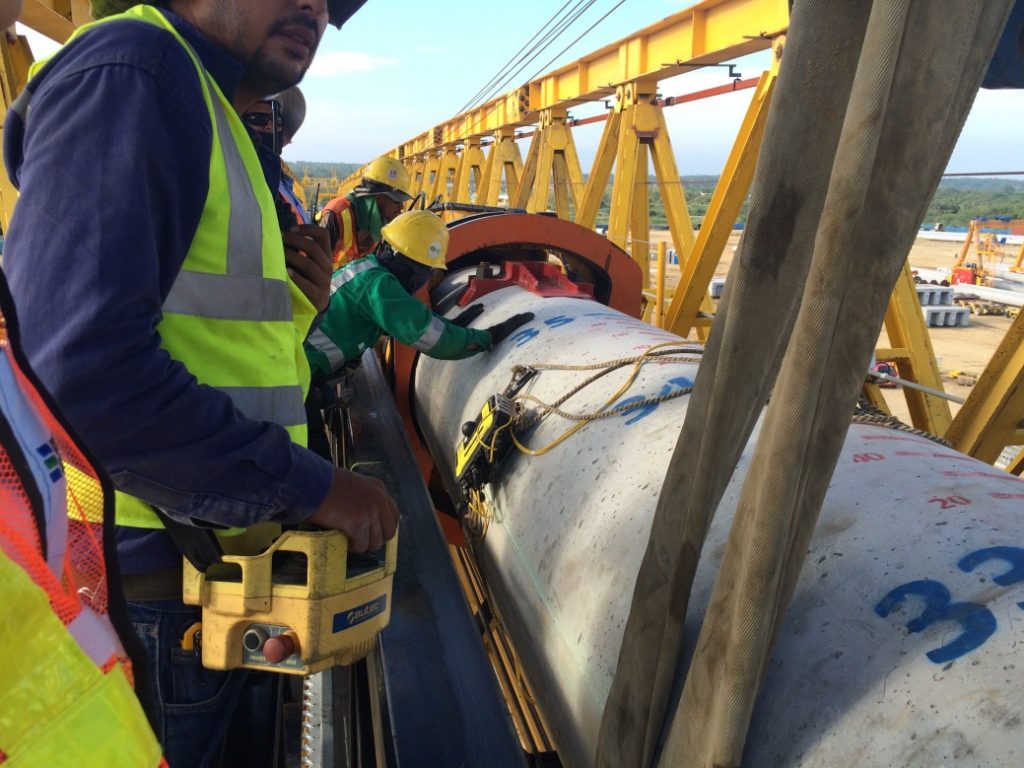
Picture 4
The construction method with the launching gantry allows the entire bridge to be built with precast pre-stressed concrete elements. For production of these elements – piles, pier caps and bridge girders – a complete precast yard has been built next to the northern abutment of the bridge. All elements are then transported to the rear of the gantry, using the already constructed part of the bridge.

Picture 5
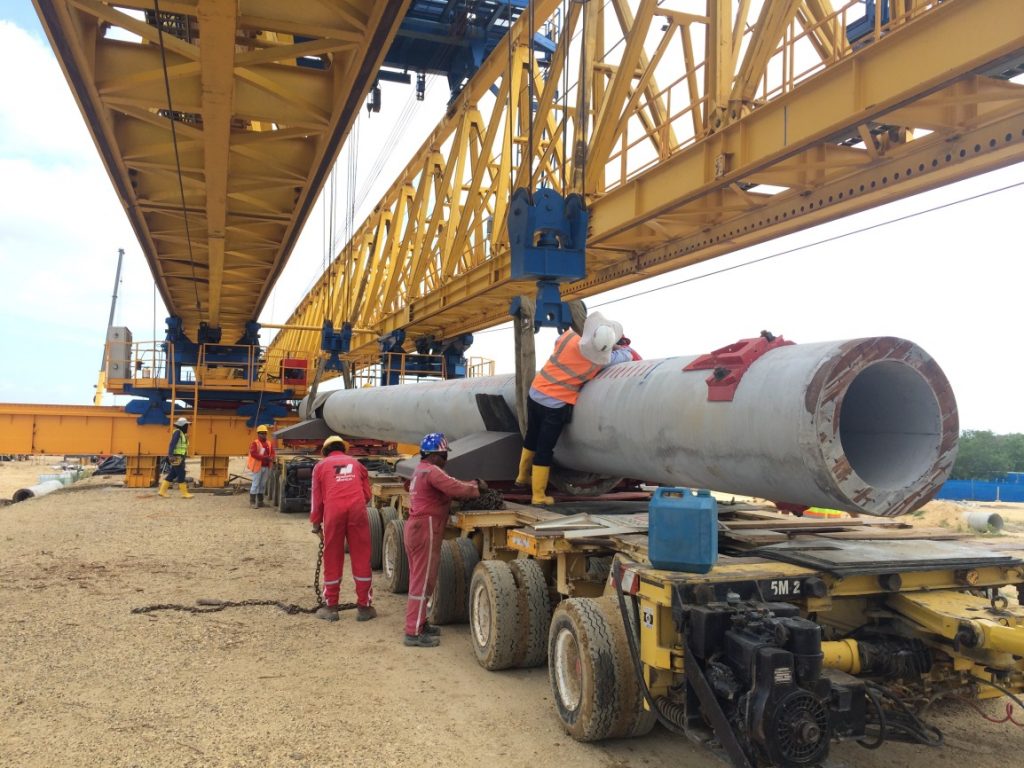
Picture 6
The launching gantry consists of 2 parallel truss bridges, and rests on 2 main support beams that are placed on already installed piers. From there the gantry cantilevers approx. 50 m, just past the loacation of the next pier. Running over the top of the gantry are 2 cranes and at the front there is a leader system, equipped with a Berminghammer B6505-HD diesel hammer
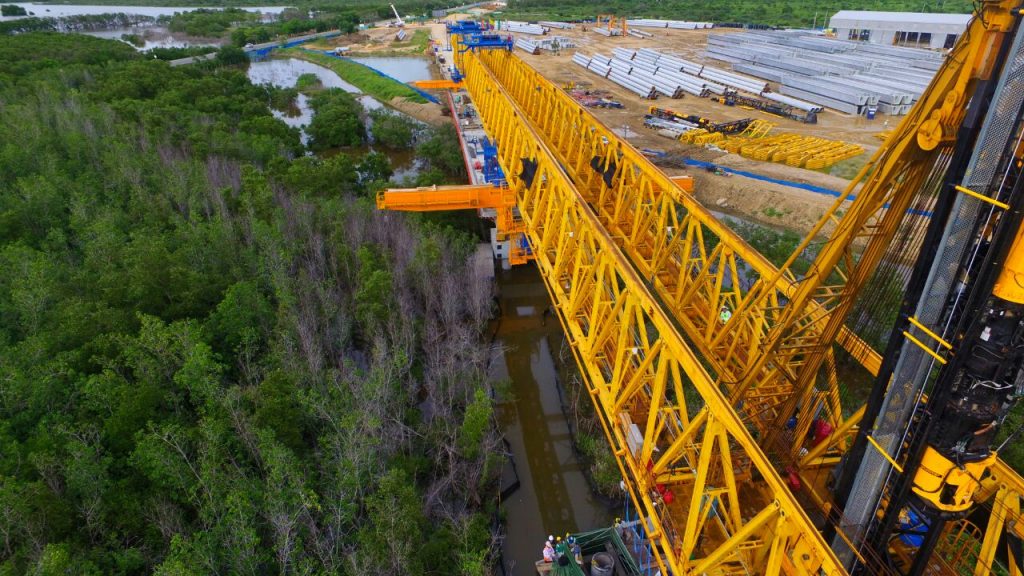
Picture 7
The hollow concrete piles with a diameter of 1,0 m and a length of up to 55 m are driven in 2 sections that are jointed together with a custom designed mechanical splice . The cranes move the pile sections from the rear to the front of the gantry where it is placed into the leader. Next the leader is erected vertically, after which the pile section is driven. Once the pile section is installed the leader is lowered back to the horizontal position sothe next pile section can be accepted.
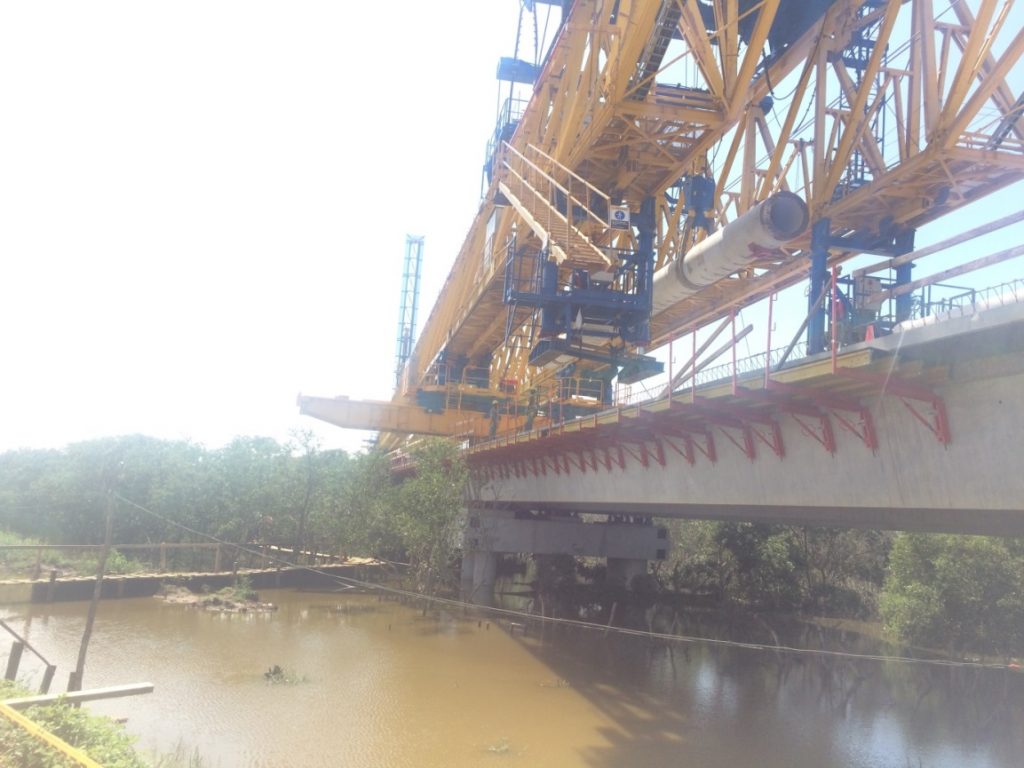
Picture 8
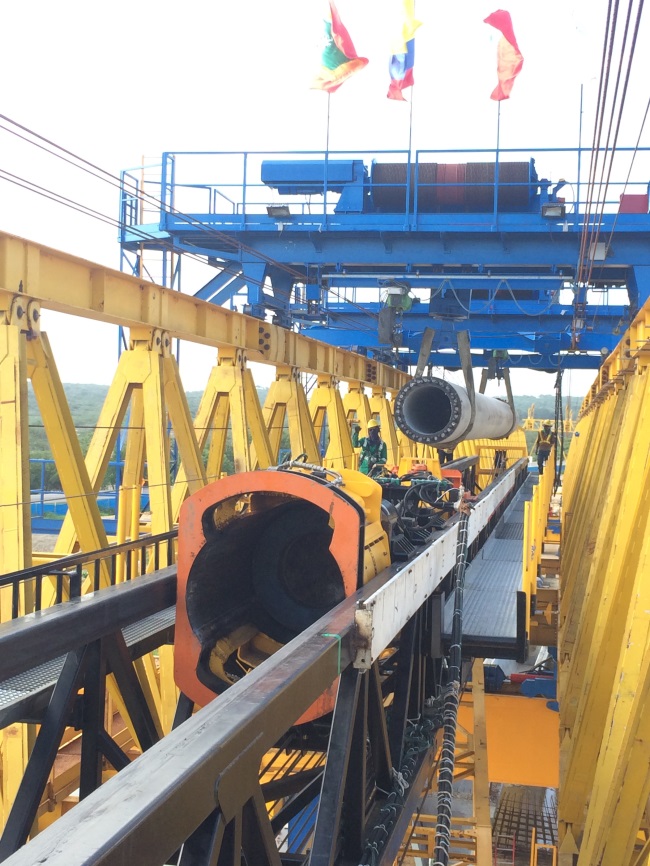
Picture 9
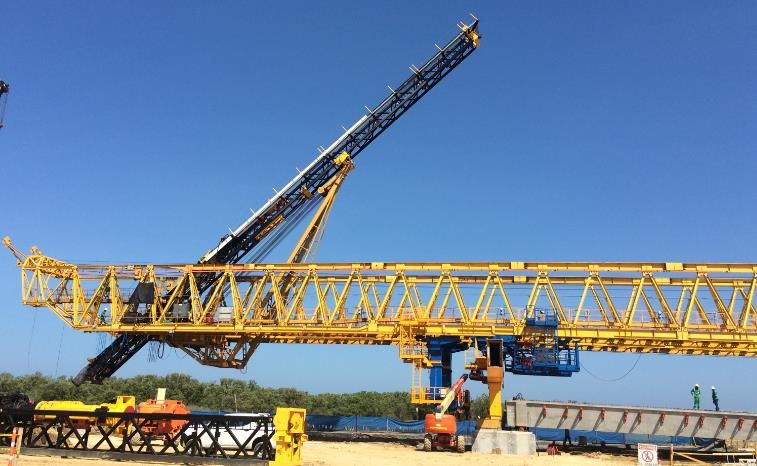
Picture 10
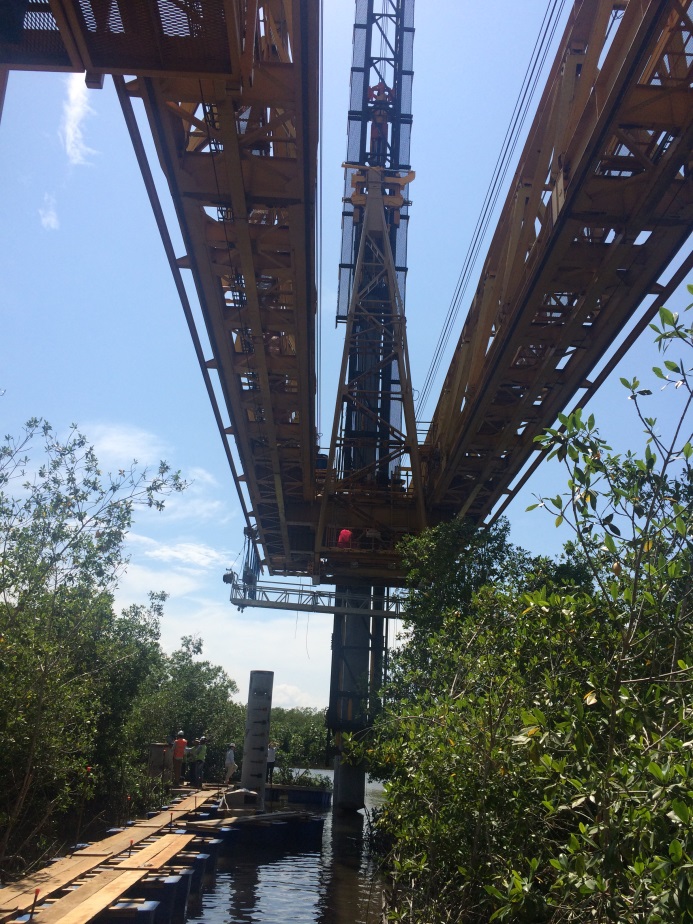
Picture 11
After all 6 piles for the pier have been installed, they are cut off and a precast concrete cap is mounted over the pile heads. Once a temporary support is placed between this pile cap and the gantry, the front main support can be moved to this new pile cap and the rear main support is also moved up one pier. Then when both main supports are in their new position, the whole gantry is moved one span forward (approx. 37 m), with the leader ending up just past the location of the next pier to be constructed. But before the piles for that pier are driven , the girders for the bridge deck are mounted up to the just finished pier.
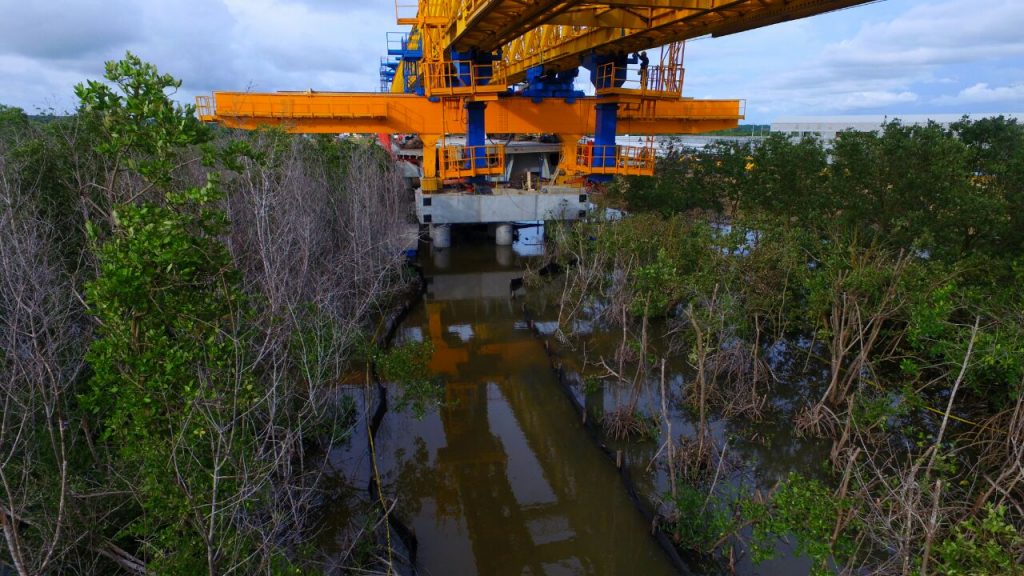
Picture 12
With the launching gantry working at its normal pace, this installation cycle takes 3 days. For that reason the piles will get their maximum design load after 72 hours, when the gantry with leader cantilevers just passed the freshly installed pier cap. In each cycle, the pile bearing capacity needs to be verified in time for that.
Rizzani started piling at the north end of the bridge in August 2016 and has finished the bridge.
Do you want to know more about PDA and DLT measurements? contact us.


